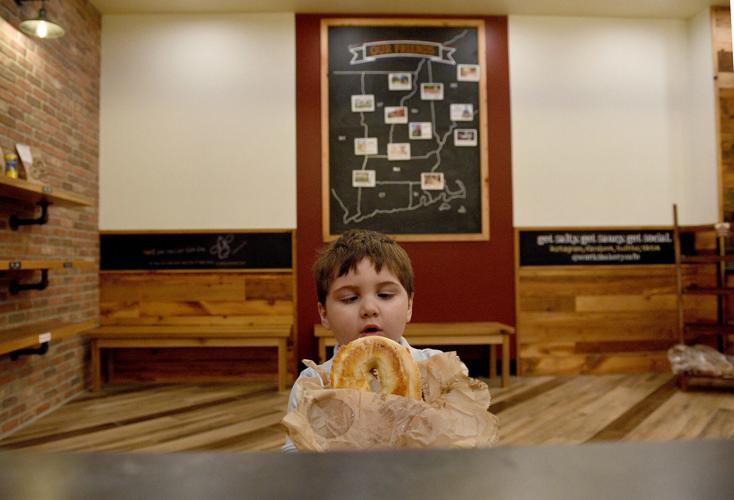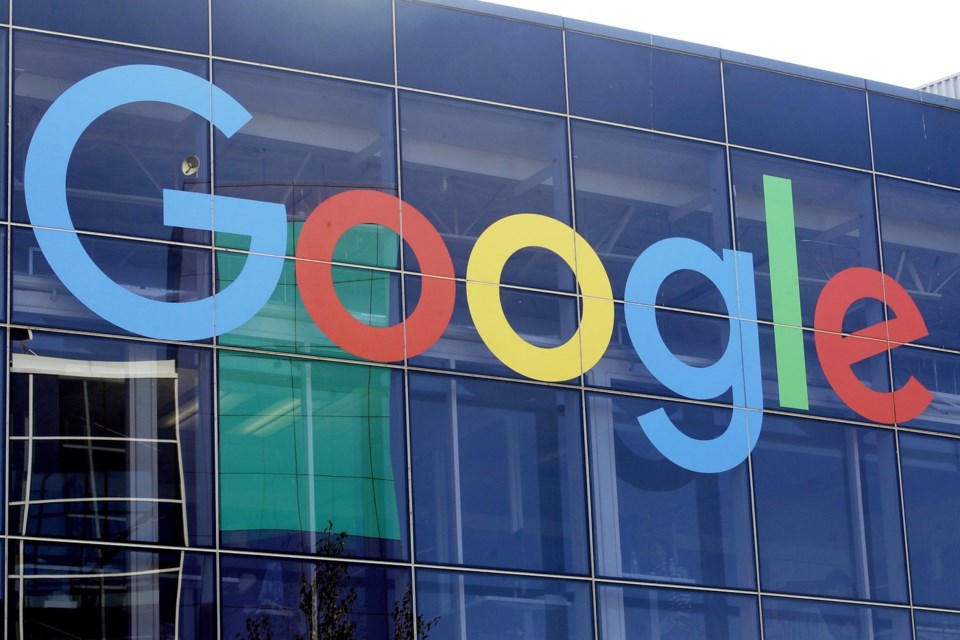If the federal election was being fought in a domestic vacuum, without the casual threats of annexation and economic obliteration spewing from the White House, it would still be one for the ages. Canada’s economy has experienced an historic bout of weak productivity, it’s grappled with the fallout from record levels of immigration and one must go back decades to find a housing market this unaffordable. But, of course, this isn’t just an election battle about how to fix Canada’s homegrown challenges.
U.S. President Donald Trump has fractured the global economic order and sewn unprecedented uncertainty, while his tariffs on many imports from Canada threaten investment and jobs in profound ways.

Rarely have the economic stakes been so high in a federal election. On that, the party leaders agree. There is general consensus around what Canada needs, particularly between Liberal Leader Mark Carney and Conservative Leader Pierre Poilievre: more homes, more investment, more resource projects and more trade partners.
They also share a willingness to keep Canada deep in the red to get there. Where the parties diverge is in their blueprints to achieve those goals, sometimes in stark ways. From housing, energy and jobs to trade, productivity and Canada’s fiscal health, here are the ways Canada’s main parties are promising to safeguard the economy, and why those promises may be difficult to keep.
Five months since Mr. Trump began threatening to impose crippling tariffs on Canada, the country appears to have avoided a worst-case scenario. The United States imposed 25-per-cent tariffs on Canadian goods but then granted an exemption for products that comply with the continental free-trade agreement, allowing the majority of exports (possibly up to 86 per cent, according to a Royal Bank of Canada estimate) to keep crossing the border duty-free.
When Mr. Trump expanded his trade war to the rest of the world in early April, Canada and Mexico were exempt from a 10-per-cent baseline tariff placed on other countries. Still, the Trump administration continues to hammer certain Canadian industries with tariffs, including auto manufacturing, steel and aluminum, and has threatened higher levies on lumber, pharmaceuticals and other metals.
More fundamentally, Mr. Trump’s extreme protectionism, and his push to reorder global trade and suck investment and jobs into the U.S.
, has raised doubts about Canada’s place within an integrated North American economy. “Is the U.S.
really ever going to be a good-faith trade partner ever again? It’s a reasonable question to ask,” said Peter Morrow, an associate professor of economics at the University of Toronto who specializes in trade. “If you think about there being a number of different centres of geopolitical power going forward over the next couple of decades, does Canada want to be part of Fortress North America, and really march in lockstep with the U.S.
? Or does Canada want to diversify, and perhaps pursue relationships with Europe more carefully, or more provocatively with China?” U.S. auto industry appeals to Trump to reverse course on tariffs The next prime minister will have to grapple with these questions almost immediately, with the White House pushing to accelerate the renegotiation of the United States-Mexico-Canada Agreement, the free-trade deal that replaced the North American Free Trade Agreement in 2020.
Canada’s party leaders have vowed to respond to Mr. Trump’s aggression in a similar manner: Promising to punch back against U.S.
tariffs with their own, support workers in hard-hit industries, reduce interprovincial trade barriers, and diversify markets for Canadian goods with better port and transportation infrastructure, and with new trade deals. Mr. Carney is promising a $5-billion fund to improve trade-related infrastructure and a $25-billion export credit facility to help businesses find new markets.
The Liberals would also pursue trade deals with the regional trading blocs in South America and Southeast Asia. Mr. Poilievre is promising to get more Canadian oil and gas to tidewater by fast-tracking energy infrastructure projects, and he would pursue a free-trade and mobility agreement with the United Kingdom, New Zealand and Australia.
Any push to diversify trade, however, faces an uphill battle. The massive market to the south has long had a gravitational pull on Canadian commerce, given the proximity, transportation links and strength of the U.S.
consumer. It’s unrealistic to think Canada will wean itself off the U.S.
any time soon, said Dr. Morrow. “A realistic middle ground would be to think about it industry by industry,” Dr.
Morrow said. Should Canada really be worried about U.S.
textiles? Probably not, he said. “But if you think about it as buying F-16 [fighter jets], or if you want to think about pharmaceuticals, how reliable a partner do we want? I think that’s really the important question.” The federal government will continue to be in the red over the next four years regardless of which party wins the election, as they each promise new spending and tax cuts.
Meanwhile, a trade war with the U.S. risks deepening budget shortfalls.
Both leading parties have promised to rein in government expenditures during their campaigns, but their platforms include more spending promises than cuts as Liberals and Conservatives look to meet the NATO defence spending target of 2 per cent of GDP, incentivize housing construction and cut personal income taxes. Mr. Carney has justified running deficits by proposing to separate the government’s “operating” and “capital” expenses.
The Liberals have projected they will balance the government’s budget for day-to-day expenses over the four-year horizon, while running a deficit to finance projects that contribute to capital formation, such as infrastructure. That approach is used in countries such as Britain, however, some economists are concerned it creates too much leeway for governments to decide what constitutes an operating versus a capital expense. Sticking to a more traditional sense of budget balances, the Liberals’ platform projects a $62.
3-billion deficit this fiscal year, higher than the Parliamentary Budget Officer’s forecast, that will then fall to about $48-billion in 2028-29. The Conservatives, by contrast, project a $31.4-billion deficit this year and smaller budget shortfalls across all four years, declining to about $14-billion in the final year.
However, the slimmer deficit is in part owing to the use of dynamic scoring in the Conservative platform, a budget forecasting method that estimates how a given policy would affect economic activity and therefore revenues. Many economists believe the next federal government is at risk of running larger deficits than currently forecast, given continuing trade tensions with the U.S.
(Both parties’ platforms used a baseline economic projection from the PBO that didn’t incorporate the likely risks around the U.S. trade war.
) “The net impact of potentially weaker growth, higher borrowing needs and a potentially higher-borrowing cost environment suggest the federal government has reduced margin for policy error,” Bank of Nova Scotia economist Rebekah Young wrote in a client note. As for the parties’ plans to reduce government spending, the Conservative platform has more detail on that front as Mr. Poilievre vows to cut international aid, funding for Crown corporations (including the CBC) and government outsourcing.
Meanwhile, the Liberals say they will find $28-billion in savings by launching a spending review that would focus on making government more efficient. The Conservatives have pledged to “streamline” the federal public service through attrition and retirement, while the Liberal platform mentions “capping” but “not cutting” government workers. Federal parties have made bold commitments to increase Canada’s housing supply, with the Liberals and Conservatives each aiming to build around 500,000 homes a year.
The ambitious targets would double the rate of homebuilding at a time when the economy is facing a potential slowdown, among other bottlenecks. “Housing starts, if anything, in large parts of the country, are actually in decline because of economic conditions. So, this idea that we could double housing starts in a relatively short period of time is not realistic,” said economist Mike Moffatt in an interview.
The trade war with the U.S. has already had some impact on building material costs, said Kevin Lee, head of the Canadian Home Builders’ Association.
However, the larger concern is that an economic slowdown would depress housing starts, he said. Still, the bold targets signal an acknowledgment from federal parties that Canada needs to rapidly increase housing supply. Murtaza Haider, a professor of data science and real estate management at Toronto Metropolitan University, said the focus on supply is a shift from previous misguided policies, such as the federal government’s ban on foreign homebuyers.
The Liberals and Conservatives are looking at similar measures to increase supply, including using tax cuts and municipal incentives to lower housing costs. The Liberals say they will remove GST charges on homes that cost up to $1-million for first-time homebuyers, while the Conservatives will do so for new homes below $1.3-million.
The Liberals also pledged to slash development charges by half, promising to work with provincial and territorial governments to compensate municipalities for revenue loss. Mr. Poilievre wants to reduce development charges as well, though he proposes to compensate municipalities for half of the amount they cut.
Perhaps one difference between the two is their philosophy on homebuilding: Mr. Carney has said it’s time for the government to get back in the business of home construction, while Mr. Poilievre has said government needs to get out of the way.
The Liberals have proposed creating Build Canada Homes, an agency that would act as a developer to build affordable housing on federal lands. The Liberals are earmarking $25-billion in low-cost financing for builders of prefabricated homes. Meanwhile, Mr.
Poilievre wants to sell off federal land to developers. Mr. Moffatt says the success of BCH will depend on execution as it seeks to partner with developers, noting the federal government doesn’t have the best track record when it comes to procurement.
Long before Mr. Trump returned to the White House with an “America First” agenda rooted in tariffs, deregulation and tax cuts, Canada was a laggard in attracting investment. His policies only make the calculus of whether to build new plants here – or to even invest in the equipment and machinery that could boost Canada’s slumping productivity levels – that much more challenging.
“Even if the tariffs go away eventually, we’re still going to have this cloud of uncertainty that’s going to put a serious chill on business investment, no matter what the parties do,” said Doug Porter, chief economist at Bank of Montreal. The good news, he said, is both main parties have signalled they would take a new approach to the business sector by opposing the Trudeau government’s proposed increase to the capital-gains inclusion rate, which was abandoned after Mr. Carney took office.
“At least we’ve stopped going in the wrong direction on that front,” Mr. Porter said. The two parties plan to spur new investment in energy and other infrastructure projects, though they would still face the same jurisdictional challenges as earlier governments.
(It’s worth noting that in the event of a Liberal minority government, the support of the NDP may once again be required, and that party has blasted the capital-gains tax change, the other parties’ pro-pipeline stands and talk of reining in public-sector spending.) One of the Conservatives’ largest spending pledges would allow Canadians to defer capital-gains taxes until the end of 2026 on assets they sell if the proceeds are reinvested in Canada. It’s an “interesting” proposal, Mr.
Porter said, but he reserves judgment until he sees the details. If people funnel that money into the housing sector, instead of more productive areas, it will do little to revitalize the wider economy. Likewise, he has reservations about one of the signature Liberal pledges to insert Ottawa more directly into the business of building homes, though Mr.
Porter appreciated the party’s focus on prefab housing. “I welcome whatever productivity gains we can get, but I don’t think this is going to fundamentally fix our productivity.” Despite the whipsaw speed of Mr.
Trump’s tariff announcements, the inevitable damage to the job market can feel like a slow-motion train wreck. Some workers have already felt the pain of trade-war-related job cuts; economists warn many more could be caught in the fallout. The political parties have had to craft platforms that show how they plan to deal with the immediate crisis as well as longer-term changes in the labour landscape.
For the Liberals, in the short term, that means easing access to employment insurance, promising new skills training programs and funding directed at the auto sector. Likewise, the Conservatives propose a temporary liquidity program to help tariff-hit sectors maintain their work forces, new funding for a union training program and apprenticeship grants. “Whenever you have displaced workers, it’s a challenge to absorb them into other jobs,” said Christopher Worswick, a professor of labour economics at Carleton University.
“We’ve already seen some layoffs in the auto sector. If the tariffs are high and sustained, we’d likely go into a recession, which would increase unemployment even further beyond the auto sector. One aspect of the labour market that’s been overtaken by the trade war is immigration, in particular the large increase in temporary foreign workers and international students in recent years.
Those programs led to the fastest population surge in decades, while putting severe strain on housing markets. Some economists also argued that loose immigration policies suppressed wages and reduced job opportunities for young people. Following moves by the Trudeau government last year to clamp down on temporary and permanent resident applications, the Conservatives and Liberals have pledged to keep immigration in check – the Liberals through limits on the number of newcomers relative to population levels, and the Conservatives by keeping population growth below the level of housing growth.
“Either of the major party platforms are calling for continuing the current immigration targets set in the last year or so, which are more in line with what the Harper and Chrétien governments did,” said Prof. Worswick. “That makes sense, but it’s a very complicated environment to figure out what’s going to happen in the labour markets.
The demand side is probably going to shrink because of the trade disruption and the supply side could shrink as temporary residents leave. That will be tricky to navigate.” Mr.
Poilievre wanted the election to be about the consumer carbon tax. Mr. Carney cut that plank out from under him, scrapping the long-standing centrepiece of Liberal climate policy on his first day as Prime Minister.
That prevented a battle over climate policy. But it left a hole in the country’s plans to lower carbon emissions, which the leading parties have struggled to articulate how they will fill. Mr.
Carney says he will keep the industrial carbon tax, aimed at big emitters, as well as a planned emissions cap for the oil and gas sector. At the same time, he’s promising to make the country a “superpower” in clean and conventional energy. Mr.
Poilievre wants to scrap the industrial carbon tax and the emissions cap. Both leaders say they’ll use tax credits to encourage investment in emissions-reducing technologies. “There’s an economic coherence to the Conservative plan, because they’re basically not offering anything on climate,” said Chris Ragan, associate professor of economics at McGill University and director of the Max Bell School of Public Policy.
“Whereas the Liberals are saying, ‘Well, we care about the economy and we want to build more pipelines, and we want to do more oil and gas, but we also want to have an emissions cap and an industrial carbon pricing system.’ So their [platform] encounters some inconsistency.” Mr.
Trump’s threats have changed the national conversation around energy. There’s a new urgency to getting oil and natural gas to tidewater. Even Quebec Premier François Legault has suggested his pipeline-phobic province could be open to new projects.
The heads of 14 large Canadian energy companies tapped into this mood with an open letter last month arguing Canada should strengthen its “economic sovereignty” by overhauling the Impact Assessment Act (Bill C-69), speeding up project approvals and scrapping the emissions cap on the industry. Mr. Poilievre is on board with these ideas, and has promised to axe Bill C-69.
Mr. Carney would maintain Bill C-69, but has promised to accelerate project approval times. The political will may be there.
Whether companies actually want to build more pipelines is another question. “There is tremendous interest in the industry to have access to tidewater egress. At the same time, it’s not like there’s a huge number of companies lining up to build it,” said Rory Johnston, an energy analyst and founder of Commodity Context.
Oil prices are low. And companies have been turned off by the “graveyard” of failed projects over the past decade and the fact that, for all the time and effort it takes to build a pipeline, the return on investment isn’t that juicy, Mr. Johnston said.
“If we do have another pipeline to tidewater in either direction, east or west, it’s been my contention for a while that it’s going to require some participation from the Crown, if not a majority participation,” he said. The twinning of the Trans Mountain Pipeline – which the Liberal government spent $34-billion completing after Kinder Morgan Inc. pulled out – has helped Canadian producers fetch a better price for their crude oil, narrowing the price differential between Western Canadian Select and the U.
S. benchmark. Right now, pipeline capacity is sufficient, but the industry could be facing constraints again within two to three years, Mr.
Johnston said..
Business

A voter’s guide to Canada’s (potential) economic future

The economic stakes have rarely been so high in a federal election. Here are the policy proposals to get Canada back on track















